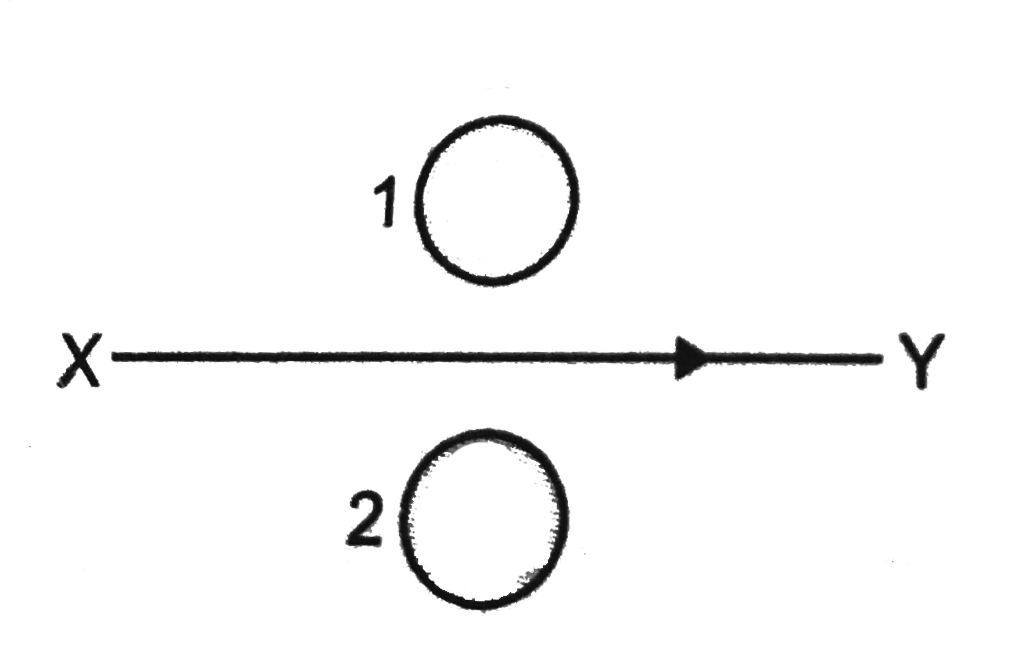What constitutes current in a metal wire?
Electrons
Protons
Neutrons
None of these
The correct Answer is:A
Similar Questions
Current I in wire XY is increasing steadily. What will be the direction of induced currents in metal rings 1 and 2 ?

View SolutionIf one mole of electrons is passing from point P to another point Q on a straight metal wire in time interval of 1 ms, then what will be the magnitude of current in the wire ? What is the direction of current ?
View Solution
Knowledge Check
A current carrying metal wire of diameter 2 mm produces a maxiumum magnetic field of magnitude 4×10−3 T. What is the current in the wire ?
A5AB10√2AC15AD20AAssertion : Electrons which constitute the current are negatively charged.
Reason: Current carrying wire is negatively charged.AIf both assertion and reason are true and reason is the correct explantion of assertion.BIf both assertion and reason are true and reason is not the correct explantion of assertion.CIf assertion is false but reason is true.DIf assertion is true but reason is false.Assertion : Electrons which constitute the current arc negatively charged.
Reason: Current carrying wire is negatively charged.AIf both assertion and reason are true and reason is the correct explantion of assertion.BIf both assertion and reason are true and reason is not the correct explantion of assertion.CIf assertion is false but reason is true.DIf assertion is true but reason is false.
Why do the free electrons in a metal wire, flowing by themselves, not cause any current flow in the wire
View SolutionPredict the direction of induced current in metal rings 1 and 2 when current I in the wire is steadily decreasing .

View SolutionPredict the direction of induced current in metal rings 1 and 2 when current I in the wire is steadily decreasing .

View SolutionWhich particles constitute the electric current in a metallic conductor?
View SolutionThe electric current in a wire in the direction from B to A is decreasing. What is the direction of induced current in the metallic loop kept above the wire as shown in the Fig. 6.16?
View Solution
